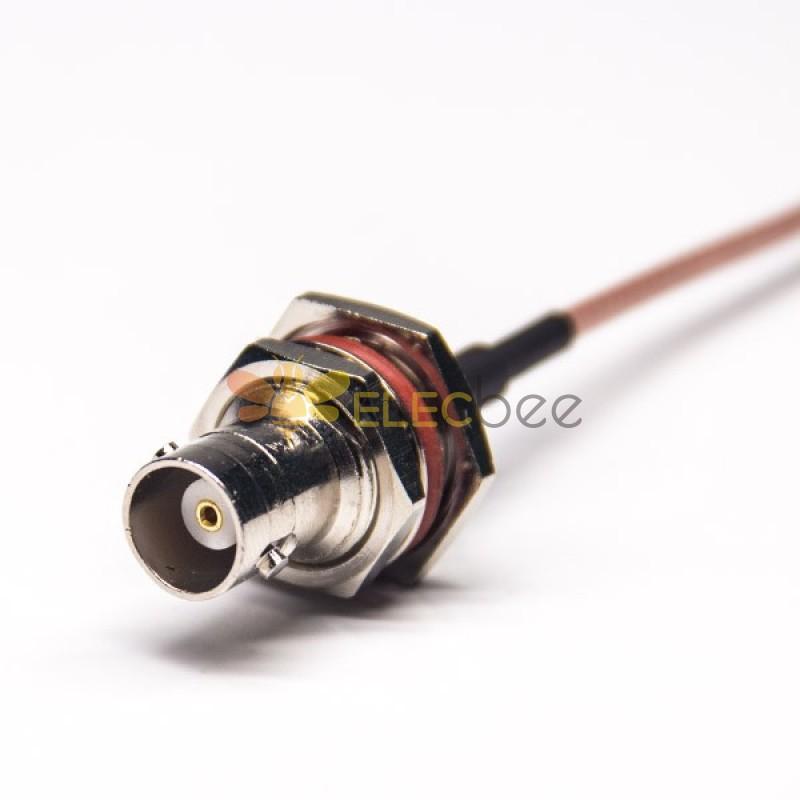The short answer is yes, it is possible to splice a BNC cable into an RCA cable, but there are some important considerations and potential challenges to keep in mind. In this article, we will explore the technical differences between BNC and RCA connectors, discuss the process of splicing cables, and provide some guidelines for ensuring a successful splicing job.
Understanding BNC and RCA Connectors
Before diving into the specifics of splicing cables, it is important to understand the differences between BNC and RCA connectors, as well as the types of signals they are designed to carry.
BNC (Bayonet Neill-Concelman) connectors are designed to transmit high-frequency analog signals, typically in the range of 0-4 GHz. They are commonly used in professional video applications, such as broadcast television, security cameras, and medical imaging equipment. BNC connectors have a threaded coupling mechanism that provides a secure and reliable connection, and they are known for their excellent signal quality and resistance to interference.

RCA (Radio Corporation of America) connectors, on the other hand, are designed to transmit low-frequency analog signals, typically in the range of 0-1 MHz. They are commonly used in consumer electronics, such as DVD players, gaming consoles, and home theater systems. RCA connectors have a simple plug-and-jack design that is easy to use, but they are more susceptible to interference and signal degradation than BNC connectors.

Splicing BNC and RCA Cables
To splice a BNC cable into an RCA cable, you will need a few basic tools and materials, including:
- A BNC connector
- A RCA connector
- A cable stripper
- A soldering iron
- Solder
- Heat shrink tubing
- Electrical tape
Here are the basic steps for splicing the cables:
- 1. Strip the ends of both cables using the cable stripper, exposing the inner conductors and shielding.
- 2. Slide a piece of heat shrink tubing over the BNC cable, so that it will cover the splice area later.
- 3. Insert the inner conductor of the BNC cable into the center pin of the BNC connector, and solder it in place. Then, insert the shield wire into the connector and solder it to the outer ring.
- 4. Insert the inner conductor of the RCA cable into the center pin of the RCA connector, and solder it in place. Then, insert the shield wire into the connector and solder it to the outer ring.
- 5. Slide the heat shrink tubing over the splice area, and use a heat gun or lighter to shrink it down and secure the connection. Be careful not to overheat the tubing or the cables.
- 6. Wrap the splice area with electrical tape to provide additional protection and insulation.
Challenges and Considerations
While splicing BNC and RCA cables is technically possible, there are some potential challenges and considerations to keep in mind.
Firstly, the impedance of BNC and RCA connectors is different, which can cause signal loss and degradation when spliced together. To minimize this issue, it is recommended to use a high-quality BNC-to-RCA adapter instead of splicing cables directly.
Secondly, BNC cables are typically thicker and more rigid than RCA cables, which can make splicing them together more difficult. Make sure you have the appropriate tools and materials and take your time to ensure a secure and reliable connection.
Finally, it is important to note that splicing cables can void the warranty of your equipment, and may not be allowed in certain professional settings. Always consult the manufacturer's guidelines and best practices before attempting to splice cables.
In conclusion, splicing a BNC cable to an RCA cable is possible with the right tools and techniques, but it is not always the best solution for transmitting video signals. If possible, it is recommended to use a high-quality adapter or converter to ensure the best signal quality and reliability. However, if you do need to splice cables, be sure to follow the guidelines and best practices outlined in this article to ensure a successful and safe splicing job.

